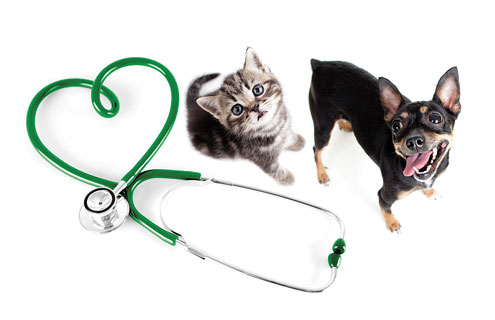By Tiffany Mitchener, DVM
Before the Visit
Did you know that a lifetime of positive veterinary experiences starts when your pet is very young? A kitten should be trained to ride comfortably in a cat carrier. Start with short car rides around the block and gradually increase the distance. These rides do not need to have a destination; the simple act of riding in a car in a cat carrier is an important feline skill. Always praise your pet for a job well done when she arrives home. A puppy should be socialized even further. Many veterinary hospitals welcome you to bring your puppy to the hospital lobby regularly for treats and a little extra love; this way the veterinary hospital visit is not always associated with the fear of a veterinary exam and vaccinations.

During the Visit
Did you know that you, as the pet owner, are an extremely important part of the veterinary appointment? Since our patients cannot talk for themselves, we veterinarians rely on owners for all communication, especially a detailed history. If this is a routine, annual wellness exam, the questions may pertain to previous medical history, current diet, medications, and any newly developing habits. If the patient is sick, the questions may be more specific, asking about when the illness was first observed, any changes to behavior, appetite, thirst, energy levels, eliminations, or other details.
It is important to be truthful in this conversation. The veterinarian is not judging your care of your pet; the veterinarian is there to help you. If you know that your pet ingested something potentially toxic, speak up! If your pet has previously diagnosed health problems, let the veterinarian know this important information. If you have any specific concerns, it is important to share these as well.
What are important steps for you, as the pet owner, to do at the veterinary visit?
- Most importantly, Do warn the staff if your pet has become aggressive or tried to bite in the past.
- Do be on time for your appointment.
- Do come prepared to give the veterinary staff your full attention.
- Do know your pet and come prepared to discuss a detailed history of the current issue.
- Do take notes to share with relatives later.
- Do be flexible with the veterinarian’s time; remember that unexpected emergencies can throw off a veterinarian’s schedule.
- Do bring only the pet with the appointment to the visit. Additional animals in the exam room can distract from your pet’s visit.
- Do get an estimate for the recommended treatments, and do feel free to discuss finances. Most veterinarians understand that caring for your pet can be expensive and would like to help you explore financing options, if needed.
- Do ask questions if you do not understand what the veterinarian is recommending.
After the Visit
Did you know that you and your veterinarian together should establish a plan for your pet’s care after the appointment?
- You should be certain that you understand this plan and are able to carry it out. It should be made clear to you what the next step is in either diagnosis or treatment with your pet.
- All medications should be explained thoroughly as to what the medication is for, how often it should be given, and what potential side effects to watch for.
- If you are not going to be able to perform some of the treatment at home, then speak up. The veterinarian may be able to modify the recommended therapy.
- If something is unclear, be sure to call the hospital and ask questions. It is also important to follow through with any recommended recheck exams.
Remember that the veterinarian is on your side and wants to help you and your pet. In order to provide the very best care, the veterinary visit requires teamwork on your part as the pet owner, your pet, and the veterinarian. The more effort you put into the appointment, the more helpful it will be for your pet. And then everyone — especially your pet — wins!